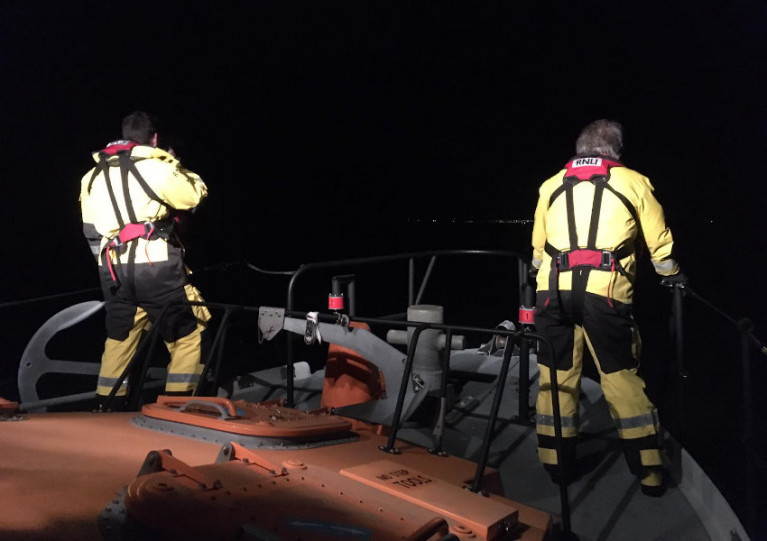While the community was shining a light in support of frontline workers this past Easter weekend, Arklow RNLI’s volunteer lifeboat crew were making their way to the lifeboat station following reports of a distress flare being sighted off the coast.
Pagers were activated at 10.20pm on Saturday night (11 April) and within a few minutes Arklow RNLI’s all-weather lifeboat Ger Tigchlearr was launched and under way.
Initial reports suggested the sighting was south of Arklow. With a number of fishing vessels working in the area, the lifeboat crew checked with them; none were in distress but they reported a sighting further north.
The Arklow lifeboat proceeded on a track north with full beam searchlights and all hands searching the darkness. With nothing yet located it was decided to deploy two white illumination flares to aid in location of any potential casualty vessel or persons.
Later in the search, the lifeboat crew were joined by Rescue 117, the Irish Coast Guard helicopter from Waterford, who had been on scene at an incident in Wexford Harbour immediately prior, as well as coastguard shore crews from Arklow and Courtown.
Following a lengthy search by all involved and with nothing located, the operation was stood down and all hands returned safely.
Following the search, Mark Corcoran, Arklow RNLI press officer and community safety officer, said: “As always our volunteers responded quickly to the reported flare sighting. I’d like to pay tribute to all who responded and were involved in this search.
“Despite the current restrictions, all of our volunteers are continuing to put themselves on the frontline.
“This sighting may have been a Chinese lantern or indeed someone letting off a flare in good faith and while this would have been done with good intent, we would ask people to refrain from this to avoid further false alarms and the need for our volunteers to be put at risk.”































































